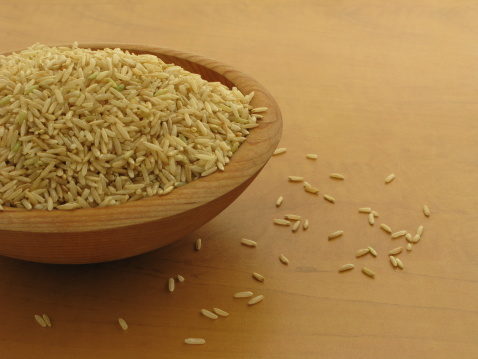Washington, D.C.—Two new sets of research, one from the U.S. Food and Drug Administration (FDA) and another from Consumer Reports, indicate levels of arsenic, a known carcinogen, in some rice and rice products grown in the United States that exceed five parts per billion (ppb). The five ppb safe exposure standard for arsenic in food has been proposed by the Environmental Protection Agency, and is the level required for drinking water in New Jersey, the strictest in the nation.
FDA described its findings as preliminary, coming before the release of its full set of data. The Consumer Reports report was final, and unlike FDA, revealed the names of specific brands of rice-based foods on which tests were conducted. Organic brands were among those found to exceed the five ppb standard in some cases. Organic rice baby cereal, rice breakfast cereals, brown rice and white rice were among the categories of products examined by both reports.
Consumer Reports found that infant rice cereals sometimes contained levels of inorganic arsenic at least five times greater than those found in alternatives like oatmeal. Organic and inorganic are the two types of arsenic, with inorganic being more associated with a high level of long-term health risk. Based on its findings, Consumer Reports recommend that consumers in the United States limit consumption of rice products, while FDA made no such recommendation, citing the need for further research. Said FDA Commissioner Margaret Hamburg, M.D., “Our advice right now is that consumers should continue to eat a balanced diet that includes a wide variety of grains—not only for good nutrition but also to minimize any potential consequences from consuming any one particular food.”
Other specific findings by Consumer Reports include that white rice grown in Arkansas, Louisiana, Missouri and Texas, which constitutes 76% of domestic rice production, generally had higher levels of total arsenic and inorganic arsenic than samples from other places. Additionally, brown rice was typically found to have higher arsenic levels than white rice, likely due to the lower levels of processing inherent to brown rice. Through a study of federal health data, Consumer Reports found that those who ate rice had arsenic levels that were 44% higher on average than those who did not.
These and other findings have led Consumer Reports to call on FDA to set federal limits for arsenic in rice products as well as fruit juices, which they reported on in January 2012. In the wake of both the Consumer Reports and FDA data, on September 21, three members of congress introduced the “R.I.C.E Act” (Reducing food-based Inorganic and organic Compounds Exposure Act), which would require FDA to set a federal limit for arsenic in rice.
Todd Kluger, vice president of marketing for organic rice maker Lundberg Family Farms, explained to WholeFoods the connection between rice and arsenic. “There are two factors that play a significant role in rice’s uptake of arsenic: plant physiology and growing conditions. Rice is a silicon accumulator. Arsenic can behave very much like silicic acid, and thus the rice plant does not seem to differentiate between the silicic acid and arsenic,” he says.
Kluger says that ways to improve upon the currently laborious process of analyzing arsenic content in crops are in the works. In 2012, the Department of Agriculture’s Agricultural Research Service began field trials of growing rice under various water conditions. Kluger says that prior studies suggested that the amount and timing of water on crop fields may have be linked to arsenic levels.
Collaborating with FDA is one way an organic producer like Lundberg has tackled the arsenic situation. “Based on the results of our testing to date, currently published literature on the toxicological effects of arsenic exposure at the levels currently being reported, consultation with toxicologists, as well as epidemiological reviews of cancer rates and dietary intake of rice, we believe that our product continues to be safe,” Kluger says.
Published in WholeFoods Magazine, November 2012 (online 9/24/12)










